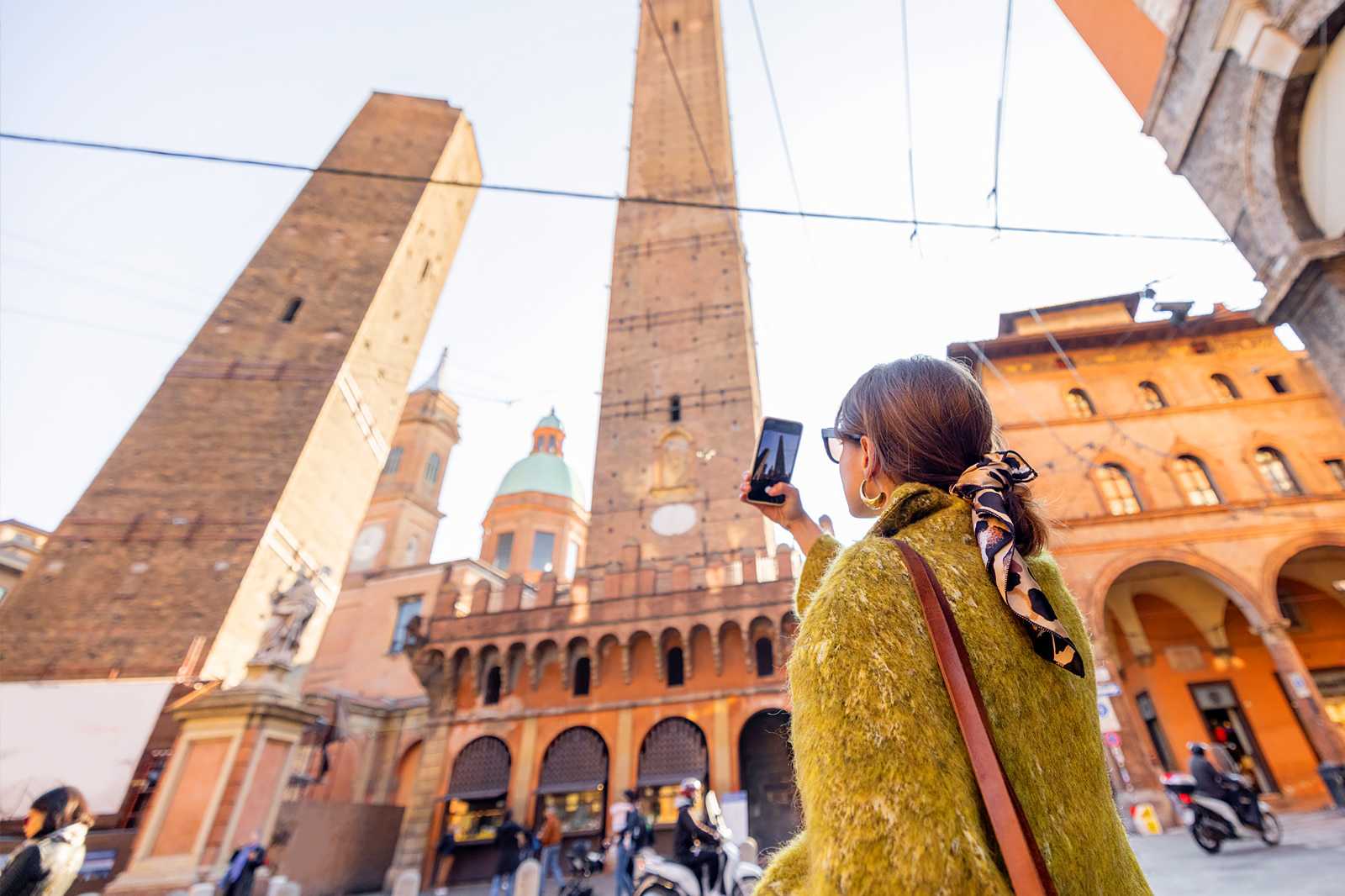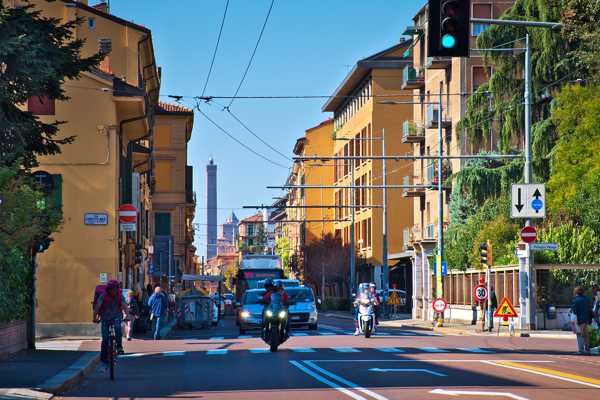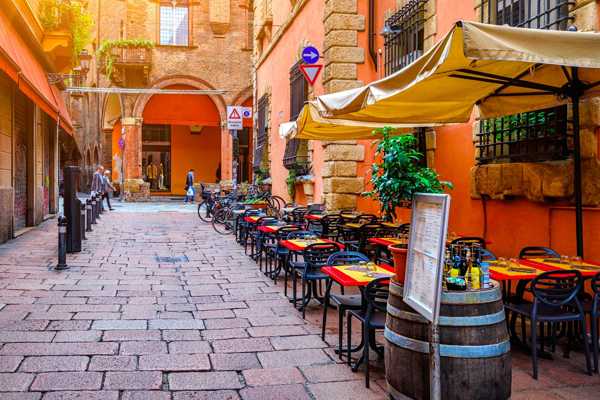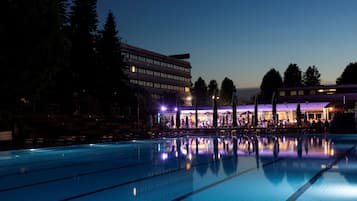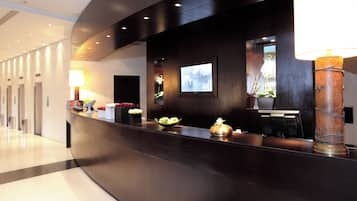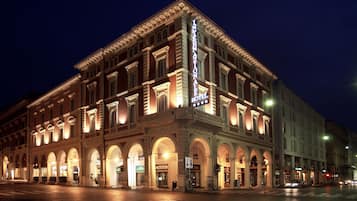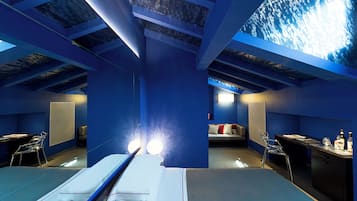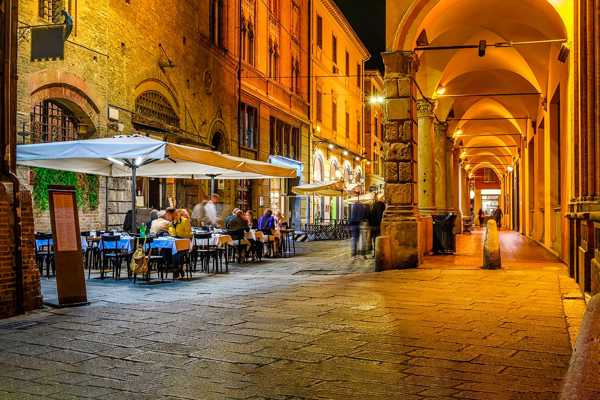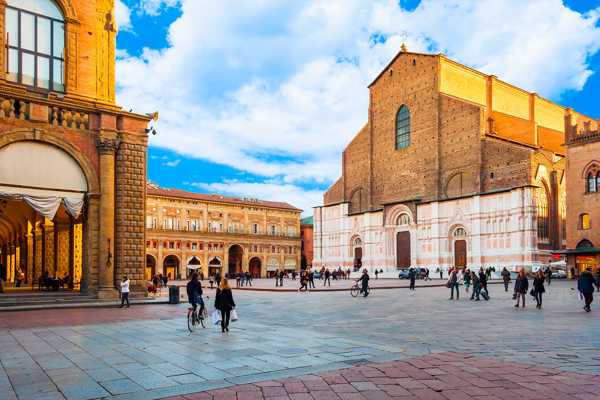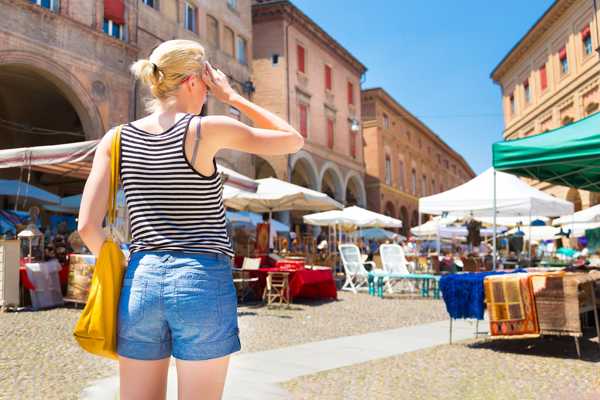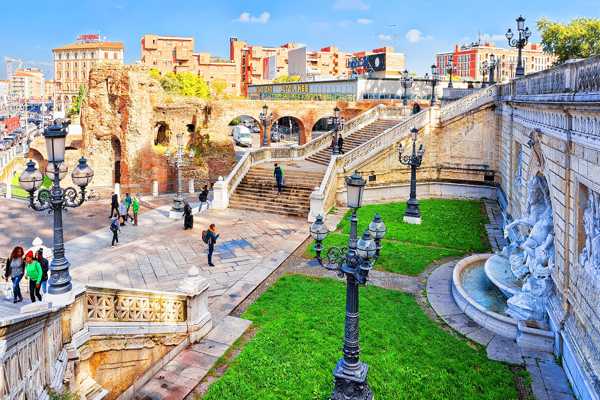Bologna still has a wealth of hidden gems to discover even after you’ve seen the city’s well-known landmarks. Students, professors, scientists and artists from all around the world have crossed paths for centuries in this university city and the streets and dwellings house curiosities and mysteries that testify to the brilliance and imagination of the city’s inhabitants.
Look closer as you wander the streets and porticoes. You’ll encounter a Roman theatre inside an 18th-century building, and strange arrows thrust into the beams of an ancient entrance hall. You'll see stones engraved with a Latin tongue-twister and sculptures so realistic they seem to cry out in pain. Elsewhere, you can visit museums with centuries of scientific research and palaces whose ingenious architecture points to a city that hasn't stopped reinventing itself since the Middle Ages. Read on and learn about fun ways to see Bologna from a different perspective.
- 1
Bologna's underground city
Hidden crypts and waterways beneath Bologna
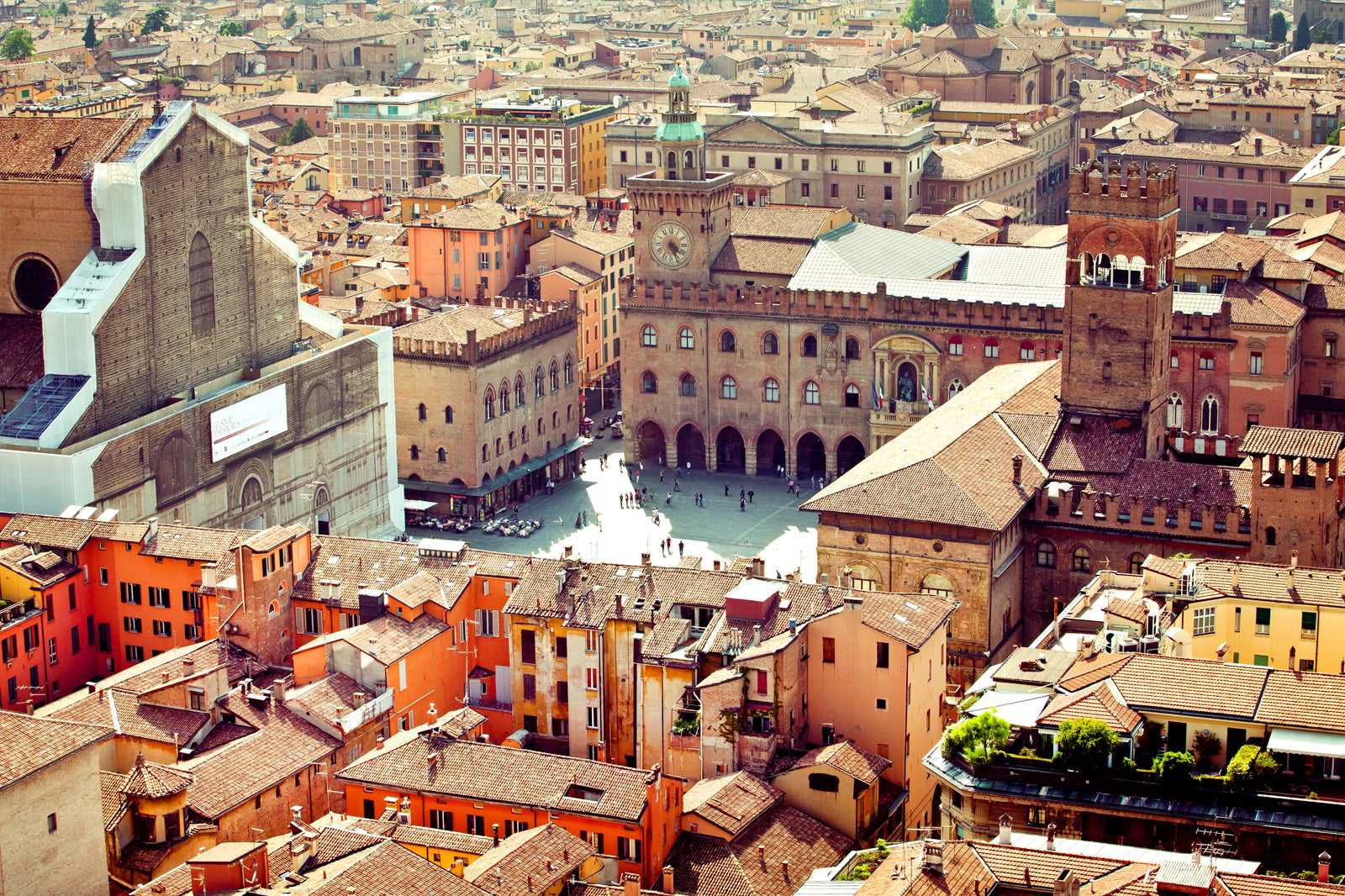
- Geschiedenis
- Foto
- Bijzonder
Bologna is a city of thousand-year-old crypts, air-raid shelters, Roman aqueducts and an ancient underground water system. Wandering the city centre’s beautiful streets, you wouldn’t think the ground beneath hides equally fascinating sites that you can see first hand. The Amici delle Vie d’Acqua e dei Sotterranei di Bologna or ‘Friends of the Waterways and Undergrounds of Bologna’ organise guided tours to the city’s most obscure spots.
Visit an 18th-century ex-asylum or little towns like Bentivoglio with its castle, Palazzo Rosso and Mulino Pizzardi. Adventurous types will enjoy treks to the Fonte della Remonda cisterns, a still-active water system. For a family-oriented tour, visit the Grotta del Ninfeo in Villa Guastavillani.
Locatie: 40120 Bologna, Italy
Telefoonnummer: +39 051 623 2255
Kaart - 2
Palazzo Poggi Museum
Where art and science meet
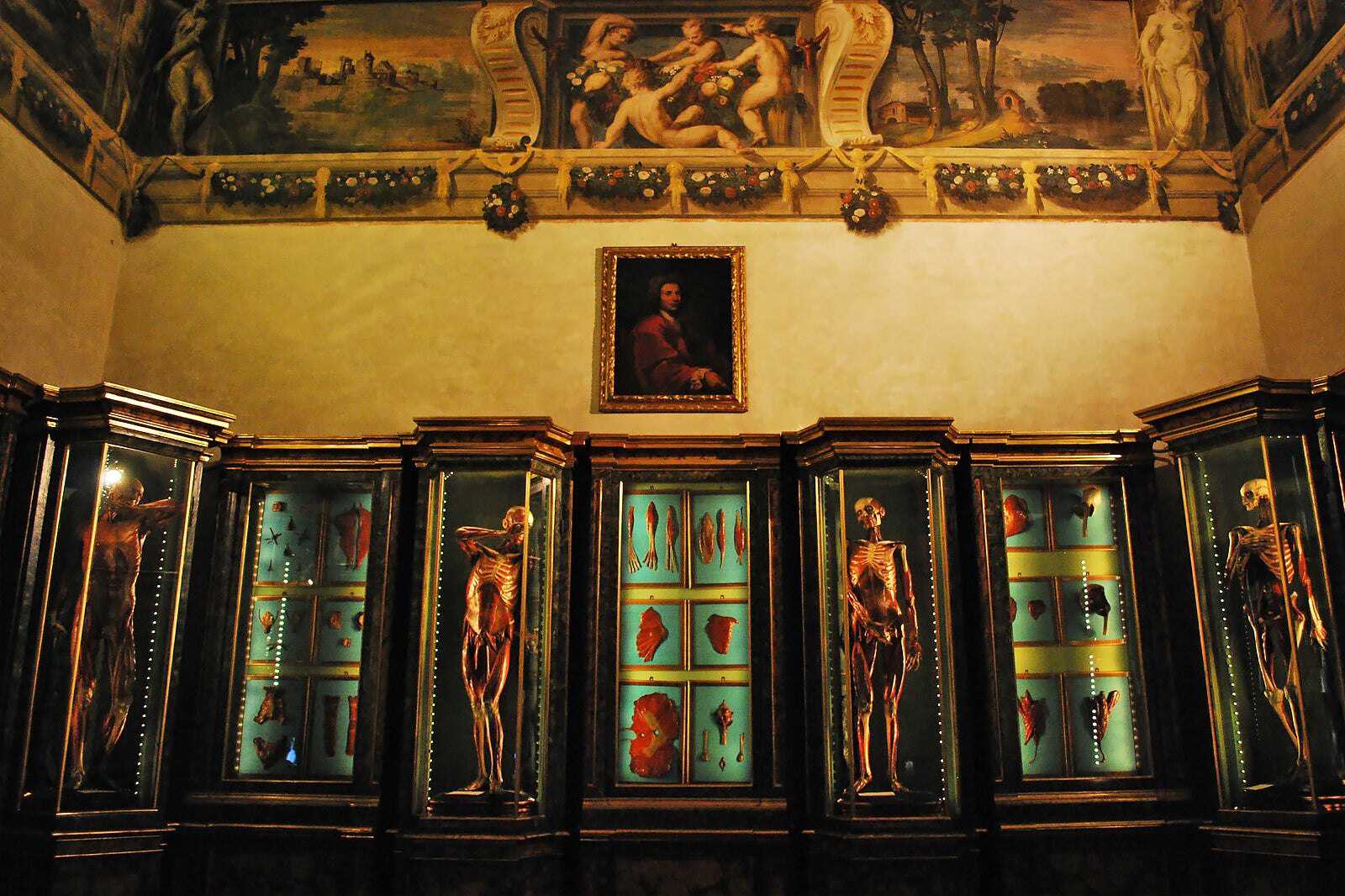
- Geschiedenis
- Foto
- Bijzonder
Palazzo Poggi once served as the headquarters for the Institute of Sciences and Arts in Bologna. Until 1799, its frescoed halls hosted its scientific laboratories and collections as well as its library and observatory. This historic centre of science and learning is now restored to its original state, allowing visitors to admire the exquisite decor and exhibits that range from geography, nautical science, chemistry, physics and anatomy to military architecture, natural history and obstetrics.
Art lovers will enjoy the oriental woodcuts made using a historical technique popular in Japan and China and part of the University of Bologna's Quadreria which features portraits of famous individuals from the Middle Ages to the 19th century. Palazzo Poggi is just beyond the Basilica of San Giacomo Maggiore and is easily reached from the centre.
Locatie: Via Zamboni, 33, 40126 Bologna BO, Italy
Openingstijden: Tuesday–Friday from 10 am to 4 pm, Saturday and Sunday from 10 am to 6 pm
Telefoonnummer: +39 051 209 9610
Kaartfoto door Elena Manente (CC BY-SA 2.0) bewerkt
- 3
L'Antico Ghetto Ebraico
Bologna's 16th-century Jewish ghetto

- Geschiedenis
- Foto
- Bijzonder
L'Antico Ghetto Ebraico or the Old Jewish Ghetto is where you can experience a part of Bologna that's somehow kept its 16th-century appearance. Walk through the ghetto along Via dell’Inferno and the narrow intersecting streets in an area that was reserved for Jews until the 1500s. It used to be locked by 2 gates at the entrance of what's now Via Oberdan and Via dei Giudei.
The community was known for its intense cultural and economic activity, and the synagogue became an important place of learning. This ended in 1593 – Jews were forced to leave when the Papal States decreed there were to be only 2 ghettos, in Rome and Ancona. Walking through the neighbourhood, with its low vaults and porticoes, alleys, pokey walkways and decorated buildings, you still get an alluring sense of a bygone era.
Locatie: 40126 Bologna, Italy
Kaart - 4
European Museum of Students
The only museum in Europe about the history of students

- Geschiedenis
- Bijzonder
The European Museum of Students details the history of the student community and their relationship with Bologna. It’s where you can witness 8 centuries of academic life at the University of Bologna through a unique lens. The 400+ objects on display include manuscripts, paintings, sculptures, posters and period clothing, as well as films displaying various aspects of student history and customs.
Sections are divided by theme, such as women's role within the university (women could only enrol 7 centuries later since its establishment), while the culture and folklore section explores student communication and expression. In this politically vibrant city, you'll also discover evidence of the student battalions involved in the Risorgimento, the struggle against fascism and the 1968 movement in Italy.
Locatie: Via Zamboni, 33, 40126 Bologna BO, Italy
Openingstijden: Wednesday–Friday from 10 am to 4 pm, Saturday and Sunday from 10 am to 6 pm
Telefoonnummer: +39 051 208 8690
Kaart - 5
Chiesa di San Procolo
Discover the stone slab bearing a tongue-twister
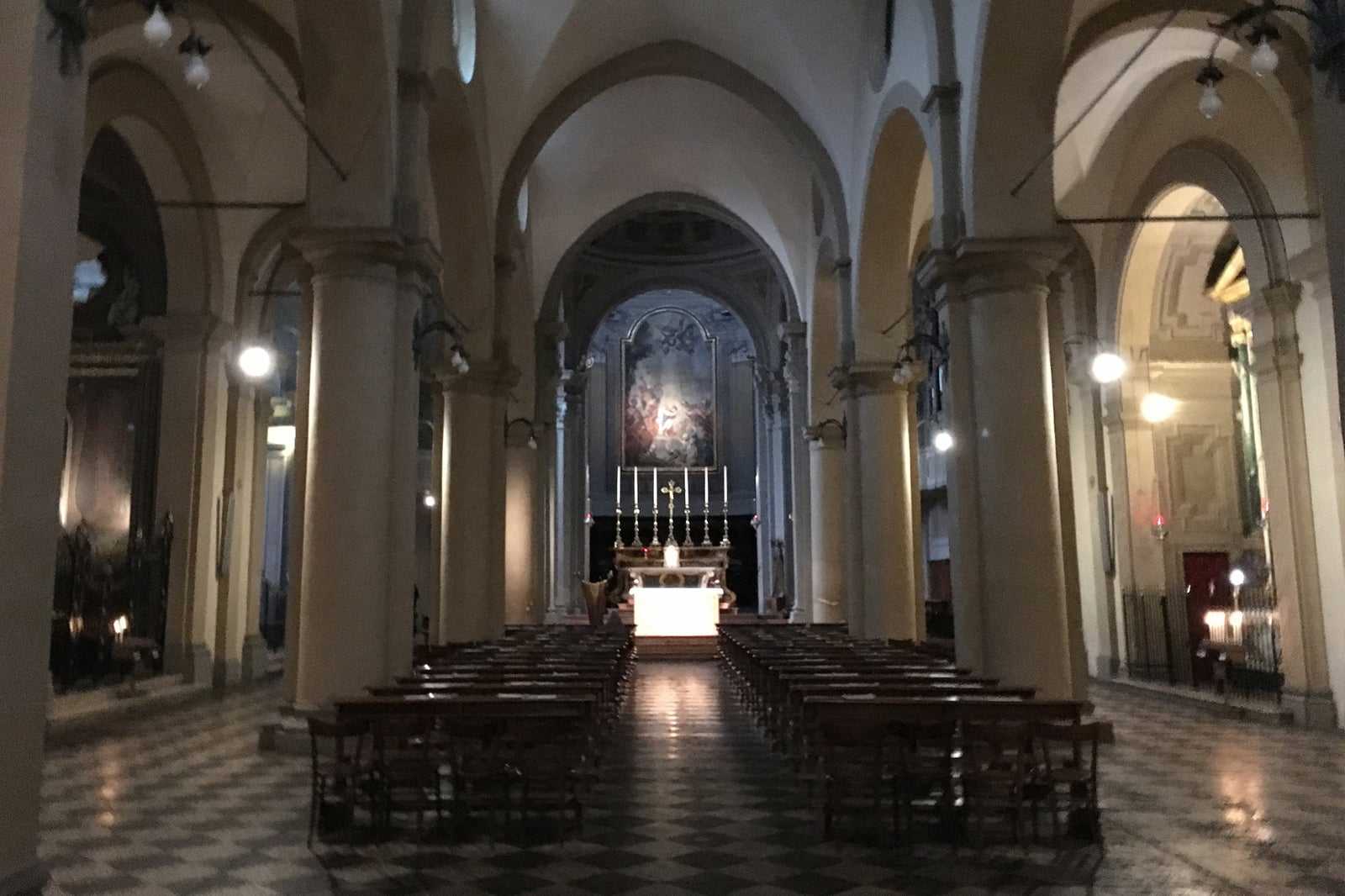
- Geschiedenis
- Bijzonder
Chiesa di San Procolo is a small building near Chiesa di San Paolo Maggiore that’s rich in history as well as quirky anecdotes. A medieval tall tale tells goes that when Saint Proculus was beheaded on the hills of Bologna, his head, chased by the rest of his body that wanted to re-attach itself. It rolled to the spot where the church was built as a monument to this extraordinary event.
The San Procolo church is where you can also find a tongue-twisting challenge that you recite in Latin. Stand before the facade and you'll see the slab with the Latin tongue-twister. Oddly, this one’s about another Proculus, but it’s not clear if he’s a bell-ringer crushed by a fallen bell or a student who died from over-studying.
Locatie: Via Massimo D'Azeglio, 52, 40124 Bologna BO, Italy
Openingstijden: Monday–Friday from 7 am to 11 am, Saturday from 9 am to 11 am, Sunday from 9.30 am to noon
Telefoonnummer: +39 051 331 223
Kaartfoto door Lorenzov79 (CC BY-SA 3.0) bewerkt
- 6
Santa Maria della Vita
Where statues seem to cry
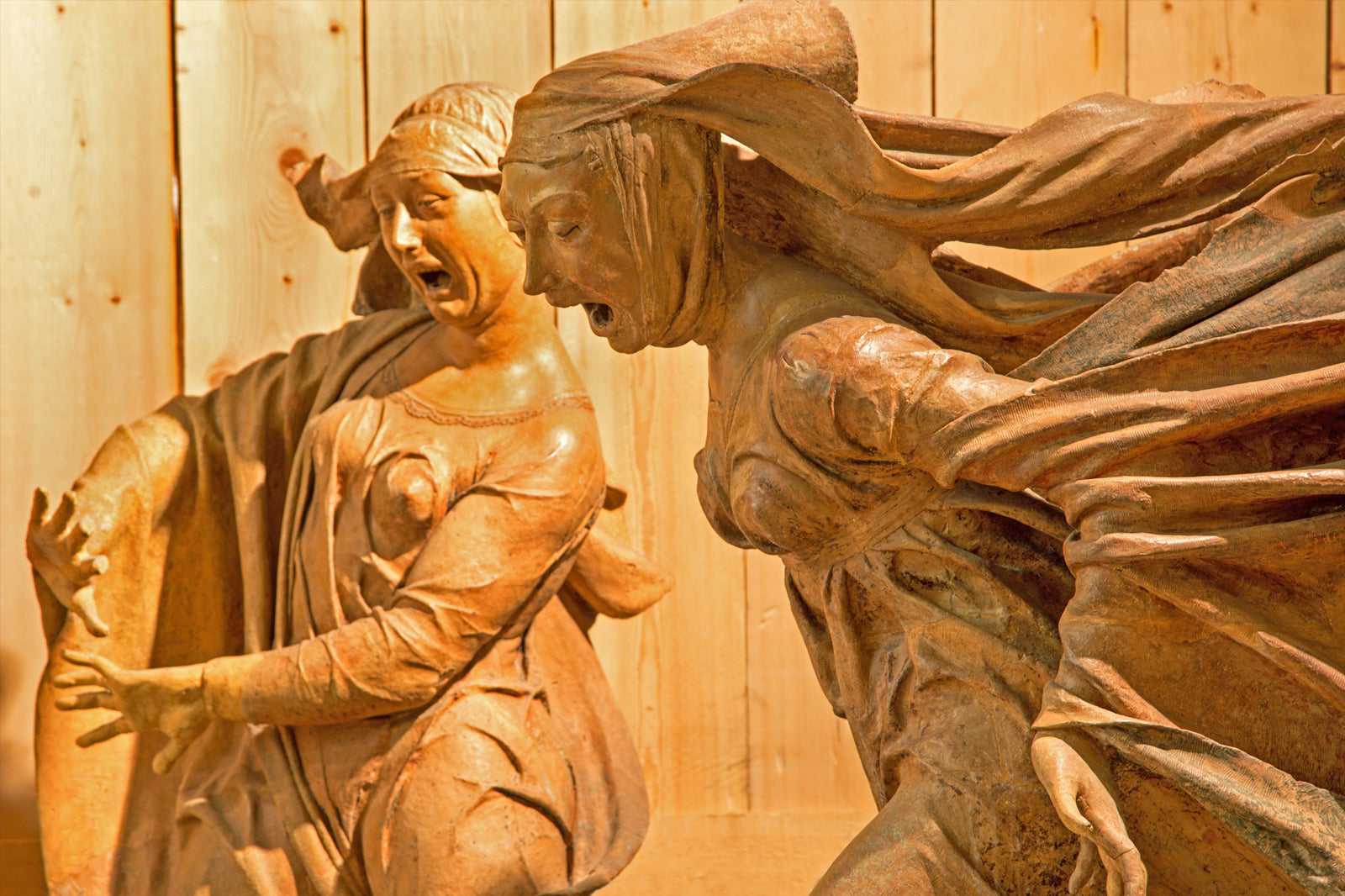
- Geschiedenis
- Foto
- Bijzonder
Chiesa di Santa Maria della Vita in the Quadrilatero district of Bologna houses the masterpiece by Niccolò dell’Arca called Compianto sul Cristo morto depicting the Lamentation of Christ. You'll understand why the Italian poet D'Annunzio nicknamed it a ‘scream in stone‘. The pained expression on the sculptures' faces are so realistic, it’s as if they're really screaming in despair. To find it, look into the chapel to the right of the main altar.
Other significant works there include the Madonna della Vita fresco, discovered in 1616 and attributed to Simone dei Crocifissi, while the adjacent Oratorio houses Alfonso Lombardi’s Transito della Vergine or ‘Death of the Virgin’ sculptural ensemble and the Museo della Sanità e dell'Assistenza or Museum of Healthcare.
Locatie: Via Clavature, 8/10, 40124 Bologna BO, Italy
Openingstijden: Tuesday–Sunday from 10 am to 7 pm (closed on Mondays)
Telefoonnummer: +39 051 1993 6343
Kaart - 7
Corte Isolani
Find the 3 arrows of Corte Isolani
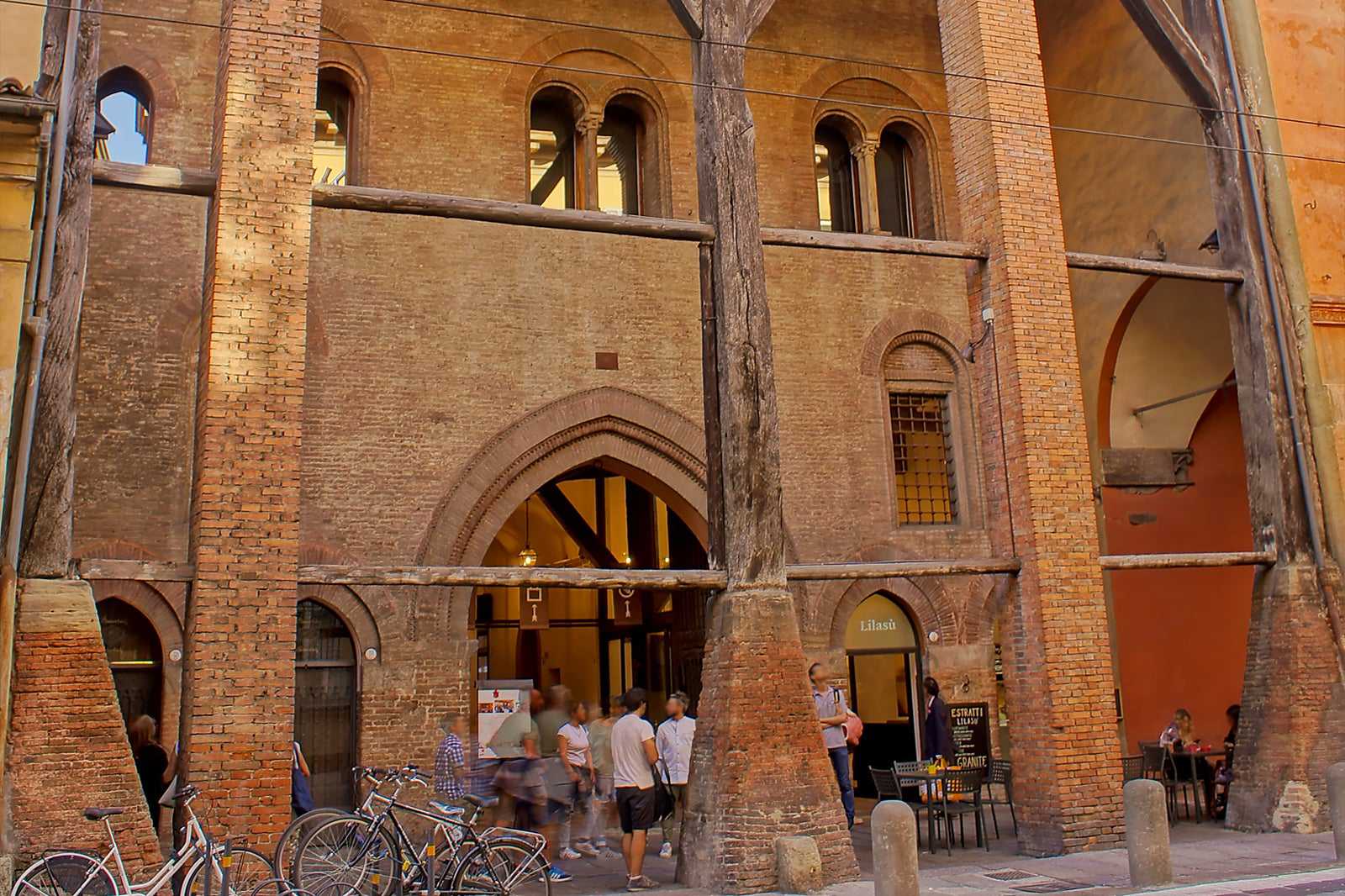
- Foto
- Bijzonder
Look up while crossing the Corte Isolani portico in Bologna and wonder why there are 3 arrows seemingly stuck in the beams. This long, covered passage starts from the square of the Sette Chiese or ‘Seven Churches’. Past courtyards and entrance halls overlooked by shops, offices and dwellings, it leads to Strada Maggiore, Bologna’s main street lined with historic buildings.
From this side, the entrance is characterised by a Romanesque and Gothic building with a high wooden portico, where you'll spy the mysterious darts. The reason they were shot is shrouded in legend – it’s thought that a nobleman, suspecting his wife of an affair, hired archers to kill her. During the ambush, the girl quickly stripped and showed her naked body to the hired assassins who, distracted, missed and shot the ceiling.
Locatie: Strada Maggiore, 26, 40125 Bologna BO, Italy
Kaartfoto door Alessandro Siani (CC BY-SA 4.0) bewerkt
- 8
Teatro Anatomico
A class in constellations and statues of doctors
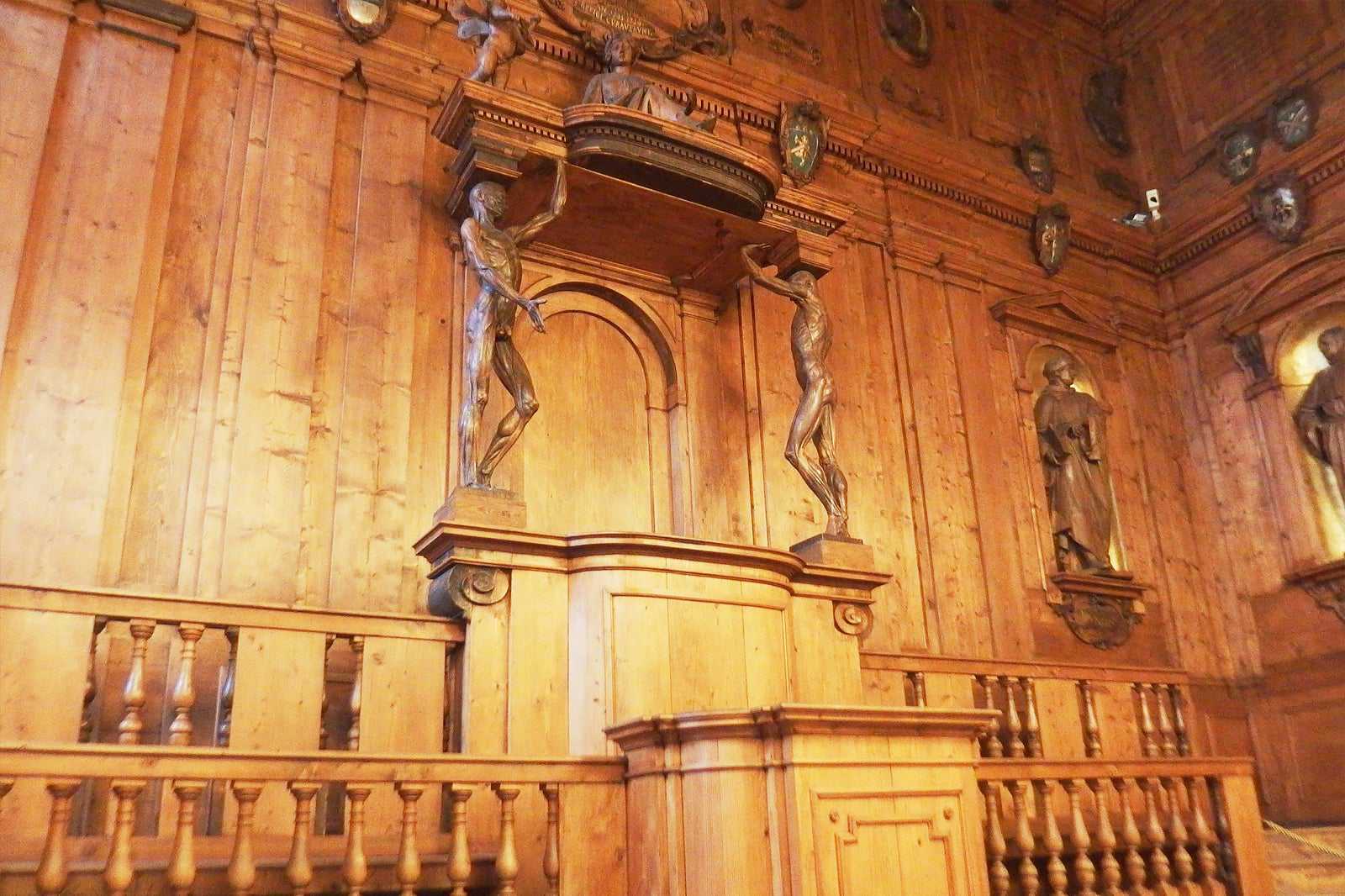
- Geschiedenis
- Foto
- Bijzonder
The Teatro Anatomico or ‘Anatomical Theatre’ in Bologna, in which you can visit inside Palazzo dell’Archiginnasio, is more than an anatomy classroom – it’s an architectural masterpiece. Designed in the 17th century, this fir wood amphitheatre contains several statues. Lower down are 12 famous doctors, starting with Hippocrates, while those higher up depict 20 renowned anatomists from the university.
The ceiling coffer features sculptures representing Apollo, protector of doctors, and the constellations. Corpses would be dissected on the central table, while to the left and right of the lecturer's seat are 2 grim figures: the so-called spellati – statues of skinless human bodies. Despite the serious damage suffered during WWII bombings, the classroom has been perfectly reconstructed complete with the original statues, retrieved unharmed from the rubble.
Locatie: Piazza Galvani, 1, 40124 Bologna BO, Italy
Openingstijden: Monday–Friday from 10 am to 6 pm, Saturday from 10 am to 7 pm, Sunday from 3 pm to 7 pm
Telefoonnummer: +39 051 276 821
Kaartfoto door Palickap (CC BY-SA 4.0) bewerkt
- 9
Teatro Romano
A building concealing ancient ruins
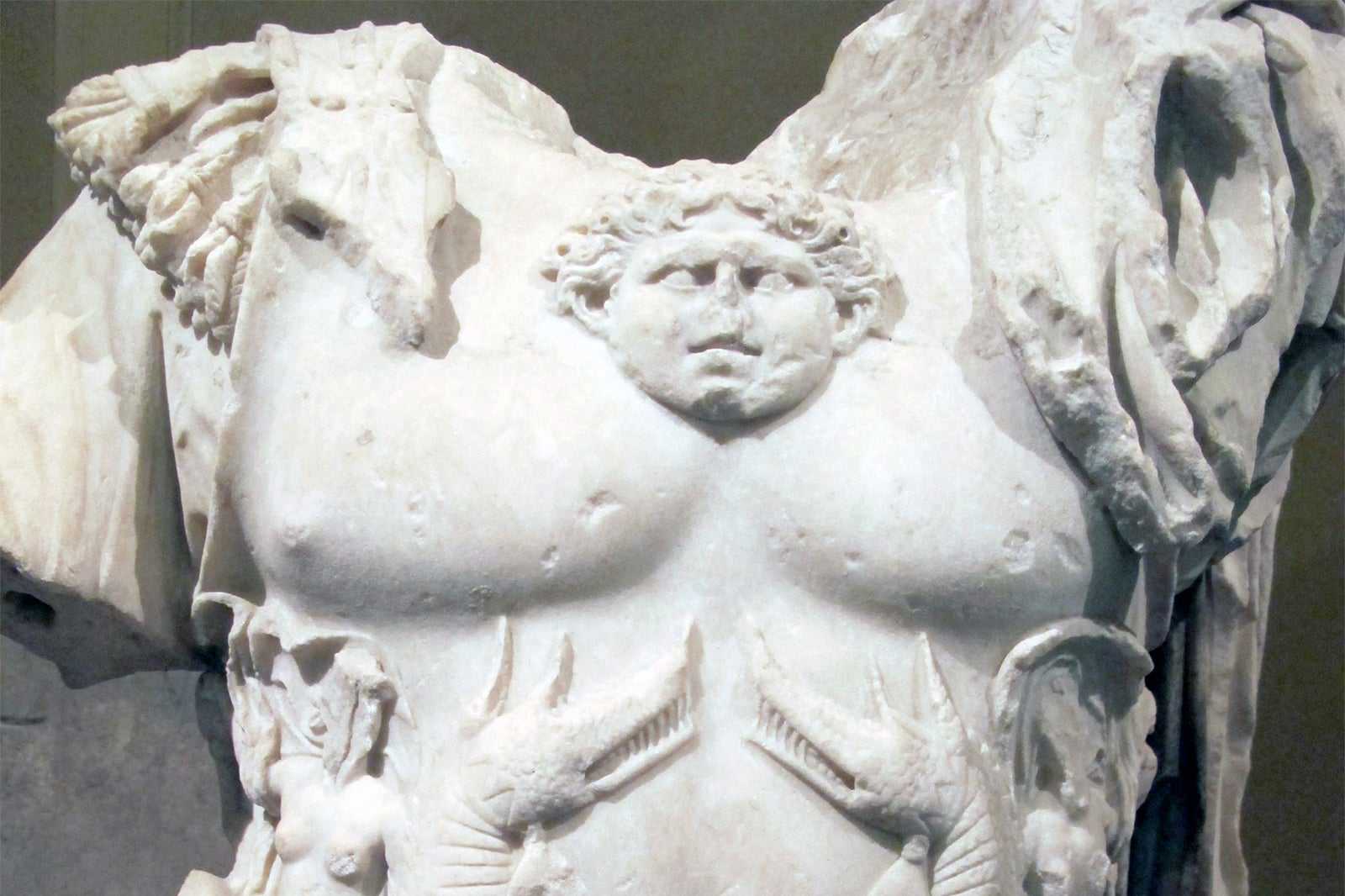
- Geschiedenis
- Foto
- Bijzonder
Visiting Bologna's Teatro Romano, you'll need to enter an 18th-century building near Chiesa di San Paolo Maggiore. The monument's history is as unusual as its location. Built in the 1st century BC, it’s the first Roman theatre to be made of stonework rather than wood.
All trace of it was lost until 1977 when renovations began inside a building in the historic centre to open a department store. The ancient structure’s remains were discovered, retrieved and integrated into the new commercial space. Following the shops’ closure, everything was left in a state of neglect for several years, until it was again restored and opened for visitors.
Locatie: Via de' Carbonesi, 7, 40123 Bologna BO, Italy
Telefoonnummer: +39 051 228 782
Kaartfoto door Sailko (CC BY-SA 3.0) bewerkt
- 10
Palazzina Majani
Elegant Liberty style in the heart of Bologna

- Foto
- Bijzonder
Palazzina Majani is one of the city's most unique buildings that you’ll encounter while strolling down Via Indipendenza in Bologna. The Art Nouveau building is shaped like a Viennese chair. The portico columns are the legs, the semi-circular balcony the seat and the upper facade the back. The whimsical lines, verging on rococo, are at odds with the centre’s medieval fabric.
Nowadays it’s occupied by businesses, but early last century it was a meeting point for Bologna's nobility and bourgeoisie. On the ground floor were the Majani family’s cafe and confectionery kitchen, while the second story hosted a ballroom. The balcony was a stage for the orchestra, whose music drifted down the street. While those glamorous days are no more, the Palazzina is still a quintessential feature that captivates passersby.
Locatie: Via dell'Indipendenza, 4, 40121 Bologna BO, Italy
Kaartfoto door Francesca Monti (CC BY-SA 4.0) bewerkt
